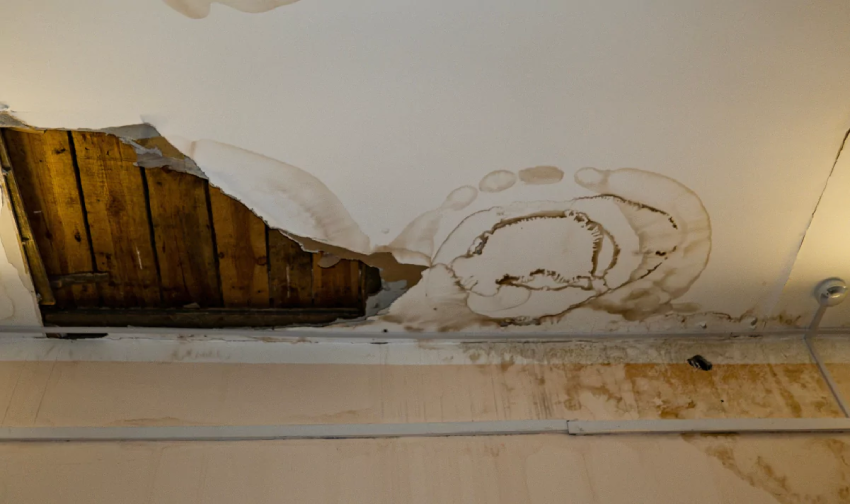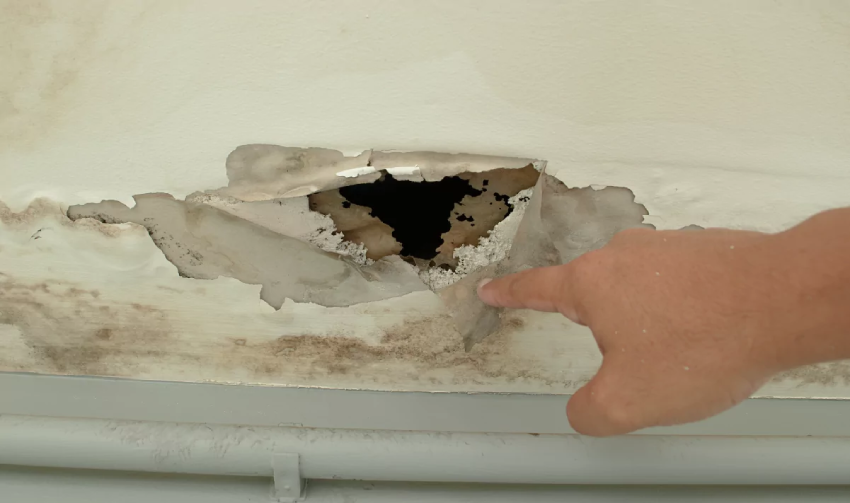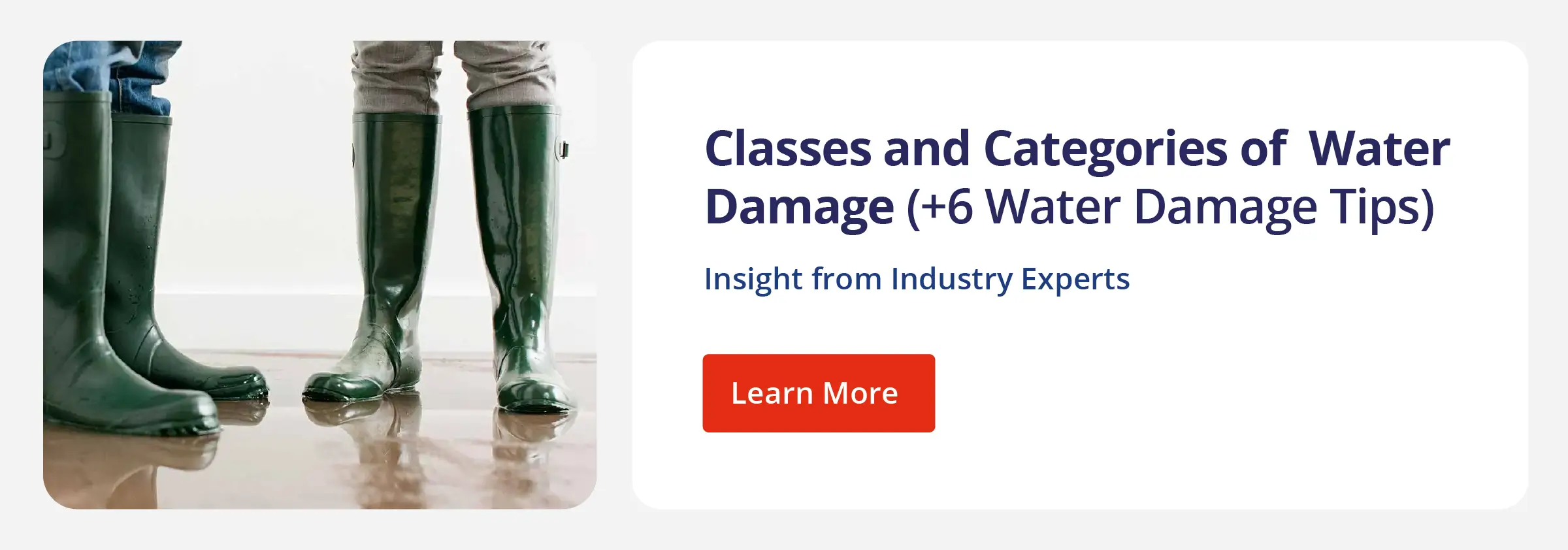
According to Rainbow Restoration, water damage can manifest in various ways, often signaling underlying issues.
|
Water damage can look like stains on walls and ceilings, cracked or warped paint, and mold growth, among other signs.
Water damage can reveal itself in many forms: sagging or cracked ceilings, and pervasive mold growth that appears as brown or black stains on surfaces are some of the more visible indicators that something is wrong. This guide will analyze some of the most common signs of water damage to look out for and highlight professional restoration services that can help in the wake of a disaster.
Table of contents:
- Visible Moisture
- Water Stains
- Mold Growth
- Peeling or Bubbling Paint
- Wall, Ceilings, or Flooring Discoloration
- Warped or Sagging Walls
- Rust
- Spongy or Soft Walls and Ceilings
- Additional Signs of Water Damage
- Causes of Water Damage
- How To Tell If Water Damage Is New or Old
- What To Do If Water Damage Is Found
- Trust Rainbow Restoration® for Water Damage Restoration
- Water Damage FAQ
1. Visible Moisture
Visible moisture refers to signs like puddles, standing water, and droplets. If condensation or puddles of water accumulate near or on floor coverings, windows, mirrors, or walls, there’s likely an underlying plumbing problem. A musty smell normally accompanies this sign, which can stem from mold growth.

2. Water Stains
A water stain on the wall, ceiling, or floor can be a major sign of water damage. Stains result from water leaking onto cellulosic materials like paper on drywall. Unaddressed water damage can weaken a property’s structural integrity and lead to severe issues down the road.
3. Mold Growth
Mold is a type of fungus that grows in wet areas with high humidity levels. Finding patches of mold in a home can suggest that part of the property has unaddressed water damage. Mold from water damage can look like fuzzy or slimy growths that spread across a surface. Mold colonies are also closely clumped together.
4. Peeling or Bubbling Paint
Sections of paint that are peeling, falling off, or have an unexpected bubble pattern are signs of water damage in walls. Excess moisture weakens the adhesive that keeps paint glued to a surface. The more water, the greater the disfiguration is likely to be. However, quick and proper water mitigation can prevent this from happening.
5. Wall, Ceilings, or Flooring Discoloration
Different surfaces have unique reactions to excess moisture. Wooden structures can cup, crown, and even buckle in extreme cases. Brick walls often take on a chalky appearance and the mortar that holds each brick together may shrink or crack. No matter the material, discolorations can help professionals find a water leak inside a wall.
6. Warped or Sagging Walls
Warped walls can be a startling sign of water damage that poses a major risk to structural integrity. Walls will become increasingly uneven over time, and may even cave in extreme cases. By this time, there is substantial mold growth. Do not attempt DIY repair or mold removal as serious injuries or further mold spread could occur. Instead, contact Rainbow Restoration for water damage restoration services.
7. Rust
Rust results from the interaction of iron, oxygen, and moisture, which makes it a potential indicator of water damage. Rusty pipes are a major area of concern; leaving them untreated could lead to pipes bursting, especially in the winter months when freezing is more likely to occur.
8. Spongy or Soft Walls and Ceilings
A surface with a soft, squishy, or spongy texture to it is often a sign of water damage. This can lead to water leaking from the ceiling in the future or even the formation of a large water bubble. The risk of a roof caving in rises as the damage becomes more visibly apparent.
Additional Signs of Water Damage
Some signs of water damage are easy to miss or confuse for another issue because they don’t always have visual indicators. Professionals will inspect a property for the following signs:
9. Dampness or humidity:
Between 30%-50% relative humidity is ideal most of the year. A service professional will use a hygrometer to see if a room’s relative humidity exceeds this limit.
10. Dripping noises:
Continuous dripping sounds can indicate a leak in a plumbing system or even a broken pipe. Either scenario can lead to water damage if left unchecked.
11. Musty smell:
Strong smells accompany water leaks, as bacteria, mold, and fungi are attracted to damper climates.
12. Health issues:
Mold growth from a water leak can induce respiratory complications in some people. Symptoms can include itchy eyes, sneezing, and coughing.
13. Increased utilities costs:
A sudden spike in a monthly water bill could indicate a leak somewhere in a plumbing system.
14. Buckling floorboards:
Water damage can weaken the integrity of a wooden floor, causing floorboards to cup or crown.
15. Insect infestation:
Silverfish and earwigs are two hydrophilic (water-loving) insects that frequent bathrooms and kitchens. However, a sudden influx of these pests can be a sign of more extensive water damage.
Causes of Water Damage
Everything from leaky pipes to natural disasters can be sources of water damage. Floods are the most common natural disaster in the U.S., with 90% of disasters involving flooding in some way. Each of these factors can cause water damage under the right conditions.
Plumbing issues
Plumbing problems can manifest in numerous ways. Pipes can burst and cause water to seep into walls and ceilings. If a toilet or sink overflows, the resulting spillage can also cause water damage. A leaky faucet or showerhead can also lead to water damage.
Storms
Strong winds and heavy rain can douse a property with excess moisture, leading to widespread water damage in severe cases. Storms often create the perfect environment for flooding, which can wreak havoc on walls and foundations.
Intrusions
An intrusion happens when a foreign object damages a part of a home, such as a tree or rock crashing through a window, wall, or roof. Rainwater can also make its way into newly exposed areas and inflict water damage on the property’s interior.
Roofing issues
Roofing issues can initially lead to minor ceiling water damage that can worsen over time. Gravity plays a big part here; if water sits atop a property, the roof can only resist that kind of constant pressure for so long. Roofs with missing shingles are even more susceptible to leakage, ultimately leading to extensive ceiling water damage or caving.
Leaky HVAC
Heating, ventilation, and air conditioning (HVAC) systems don’t use water, but they can produce small amounts of condensation while in use. This normally isn’t a problem if the drainage system is working properly, but blockages or malfunctions can inadvertently cause an HVAC system to leak and create water damage.
Malfunctioning appliances
A dishwasher or a malfunctioning washing machine can cause water damage. It is recommended to regularly check on the status of an appliance and repair or replace it sooner rather than later if a leak is identified.
Gutter blockages
Gutter blockages overlap with a few of the other causes like storms, intrusions, or roofing issues. Water from a compromised roof can flow into blocked gutters, which may have been clogged by debris after a storm swept through the area, for example.
Human error
Accidents happen, but it’s important to remedy those mistakes and prevent water damage. For example, a person could leave a faucet on in a house which could lead to major water damage. Someone could also damage their property during a DIY project gone wrong.

How To Tell If Water Damage Is New or Old
Older water damage poses more of a threat to a property’s overall condition, as wood rot and rusting can jeopardize vital structural supports. Use the following methods to check for water damage.
- Touch the portions of a property that may be affected. Older water damage normally feels harder and more dried out while newer damage is spongy.
- Check for discolorations on the walls, ceilings, and floors. Darker stains are usually more recent while brown or yellow blemishes with multiple rings are likely much older.
- Look for signs of mold growth. Larger mold colonies suggest that the water damage is possibly a few days or weeks old.
- Investigate the condition of affected materials. A lack of breakage or decay suggests the damage is newer.

What To Do If Water Damage Is Found
It’s best to contact Rainbow Restoration for professional water mitigation and restoration services. A service professional can inspect the damage and provide a detailed restoration plan.
Trust Rainbow Restoration for Water Damage Restoration
In the event of water damage, it's best to mitigate water damage and restore the property as soon as possible. The service professionals at Rainbow Restoration are backed by over 40 years of experience, using empathy and expertise to get the job done.
Call Rainbow Restoration today to get help with any water damage concerns.
This article is intended for general informational purposes only and may not be applicable to every situation. You are responsible for determining the proper course of action for your home and property. Rainbow Restoration is not responsible for any damages that occur as a result of this blog content or your actions. For the most accurate guidance, contact the Rainbow Restoration location nearest you for a comprehensive, on-site assessment.
Water Damage FAQ
As an industry leader we believe setting the highest standards in water, fire, and mold damage restoration requires a continuous focus and dedication to education and improvement. All Rainbow Restoration service professionals are graded and evaluated on response time, professionalism, and customer satisfaction. This commitment to exceptional service also includes using our experience and expertise to answer your restoration-related questions.
Here are answers to some of the most frequently asked questions about water damage.
How long does it take for water damage to show?
Water damage can appear immediately, depending on the circumstances. Mold also starts to grow in that time period.
What does mold from water damage look like?
Mold is identifiable thanks to its typically fuzzy texture and black or brown color, though it can also be green, white, or even pink. Mold often appears in damp, humid areas like a bathroom or a sink cabinet.
What does minor water damage look like?
Minor water damage can look like small leaks that gradually worsen over time. A constantly dripping faucet or a malfunctioning toilet can cause water damage in the form of visible moisture, discoloration, and stains, or mold spreading around a sink or toilet.
What does the start of water damage look like?
Water damage may look very unassuming at first; small leaks, water stains, and mild musty odors can lead to greater issues with time.
Will water damage go away on its own?
No, water damage will not go away on its own. It’s best to take action even if the affected areas visibly look better.

